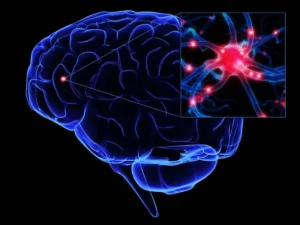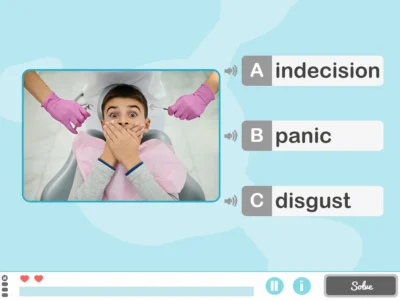The renowned specialists Javier Tirapu, Patricia Cordero-Andrés, Pilar Luna-Lario and Pilar Hernáez-Goñi analyze the model of executive functions based on factor analyses in child and school-age populations in the journal of neurology.
Introduction
Since Lezak coined the term executive functions as the mental capacities essential for carrying out effective, creative and socially accepted behavior, they have gained increasing prominence in neuropsychological research.
Various models have been proposed to explain their nature, but there is no consensus as to whether we are dealing with a unitary construct or a multimodal processing system with independent, yet interconnected, components.
To understand the structure of this construct, lesion studies, neuroimaging and, recently, factor analysis have been used, which is proposed as a promising methodology to expand our knowledge about a concept as generic as executive functions.
Development
The purpose of this study is to carry out a systematic review of factorial models of attention and executive control in adults, between the years 1991-2016, using the PubMed, OvidSP and PsycINFO databases.
In total, 33 articles were reviewed.
Based on the literature, an integrative proposal of executive processes is made.
Conclusions
Although we do not have a single model that can explain the complexity of executive functions, there does appear to be agreement regarding their multidimensionality. In factor analyses, updating, inhibition and shifting enjoy strong evidence, although there are studies that propose novel factors.
Our integrative proposal attempts to combine the executive processes found in the literature with their corresponding neuroanatomical correlates, arguing that the ideal methodology should use information from lesion studies, neuroimaging techniques and psychometric-computational models.
Introduction to the Model of executive functions based on factor analyses
Executive functions have been defined as processes that associate ideas, movements and actions, and steer them toward problem solving, but Muriel Lezak used the term for the first time in 1982 referring to mental capacities essential for carrying out effective, creative and socially accepted behavior, with four components:
- goal formulation: the ability to generate and select desirable future states;
- planning: selection of actions, elements and sequences necessary to achieve a goal;
- development: ability to initiate, stop, maintain and switch between planned actions;
- execution: ability to monitor and correct activities.
Impairment of these capacities can lead to problems with initiation, modification, control or interruption of action, resulting in a decrease in spontaneous behavior and an increase in perseveration and impulsivity.
Executive functions are considered a set of skills involved in the generation, monitoring, regulation, execution and readjustment of behaviors appropriate to achieve complex goals, especially those that are novel to the individual and require a creative solution .
In this sense, in our daily life we face situations for which we do not have a predetermined course of action, so Lezak’s claim that executive functions are the central axis that guides adaptive and socially accepted and acceptable behaviors is not an exaggeration.
Their role in neuropsychological research has been prominent, and there are multiple models that attempt to clarify the processes involved in executive functions and their relationship with different brain regions, primarily the prefrontal cortex.

Subscribe
to our
Newsletter
The nature of executive functions
Within the context of the functional diversity of the frontal cortex lies one of the crucial debates about the nature of executive functions: whether they constitute a unitary construct or a multimodal multiple-processing system with different independent but interrelated components.
The view of executive functions as a nonspecific and adaptable system assumes that there are no, a priori, regions specialized in particular functions, but that different areas of the prefrontal cortex respond coordinately when the system must solve new challenges.
Thus, executive functions overlap with the concept of fluid intelligence or the ability to optimally adapt our cognitive resources according to the changing demands of the environment. Current models tend to lean toward the second hypothesis [2,3], although there is still controversy as to whether they are unitary mechanisms that are functionally nonspecific, but highly adaptable, or relatively modular, hierarchical and specialized processes [4,5]. In this work we assume the idea that executive functions cannot be understood as a unitary construct, but as a set of multiple processes with different independent components, yet with intimate relationships among them.
Nevertheless, we are aware that this approach creates an epistemological problem if we consider that the brain is a highly complex system (it has specialized elements and its connections are not random) with emergent properties (the most complex processes cannot be explained by the simple sum of lower-level processes) and whose main function is to make predictions to act flexibly in changing environments to achieve adaptation, survival and the quality of that survival.
Searle’s emergentism approach
Searle’s emergentism approach, applied to this topic, would lead us to question whether executive functions, conceived as the ‘sum of a set of lower-level processes’, might fall into the error of assuming that the so-called executive functions are a reality with emergent properties that arise from the sum of lower-level processes, but that cannot be explained by the simple sum of them, rather that when joined new processes emerge.
Factor analysis of the Model of executive functions based on factor analyses
In recent years, factor analysis has been used to identify the components of executive functioning, as it is considered a useful tool that allows us to learn the structure of the cognitive processes underlying the observed performance in tests considered ‘executive’.
However, despite this promising utility, it is not without limitations that reduce the generalizability of the conclusions: heterogeneity in population samples and neuropsychological assessment tests makes comparison of results between studies difficult, and the idea that finding low correlations between tests is not necessarily a reflection of independence of underlying processes, but could be due to the different concepts of executive functions proposed by various authors.
The purpose of this work is to carry out an exhaustive review of the factorial models posed in the literature, to conclude with a proposal of factors involved in executive functioning. We intend to provide a process-based model that helps clarify terminological and conceptual aspects, taking as an initial idea the existence of a general consensus that assumes that several processes are involved under that ‘conceptual umbrella’ called executive functions.
Therefore, our proposal aims to be a ‘starting point’ to begin the path that leads to a process-based model of executive functions with the ramifications it would have for establishing assessment protocols capable of ‘capturing’ the differentiating aspects in different ‘disexecutive’ subjects and the implications that, in turn, this would have for establishing more effective rehabilitation programs.
If you liked this article about the model of executive functions based on factor analyses, you might also be interested in the following information:
“This article has been translated. Link to the original article in Spanish:”
Modelo de funciones ejecutivas basado en análisis factoriales






 Selective Attention Game for Adults: Explore and Find
Selective Attention Game for Adults: Explore and Find
Leave a Reply